Matador Network's Blog, page 1239
October 17, 2018
How to attend an Indian wedding

If you’re visiting India, you likely want to cram as much culture into your trip as possible. A traditional Indian wedding is as culturally rich as it gets, but there’s probably one problem: You don’t have an Indian friend getting married. Usually, that would be a pretty big obstacle, but that was before Join My Wedding stepped in. The Australian start-up company is making it easy for travelers to experience the energy and liveliness of a traditional Indian wedding. And the best part? You won’t have to make awkward small-talk with cousins you haven’t spoken to in six years.
The company’s co-founder, Marti Matesca, came up with the idea when she was invited to an Indian wedding in Tamil Nadu. She told Lonely Planet that the event was an amazing experience, thanks to “all the traditional elements of the ceremony, down to the beautiful saris, accessories, generous hospitality, colorful lights… ambiance, smell, and decorations.” Inspired by her experience, she wanted to give other foreigners the same opportunity.
Join My Wedding allows you to become an active participant in an Indian wedding’s many celebratory customs. Most are multi-day affairs, and you can choose to attend for either one day or several. In addition to the wedding itself, you will also be exposed to traditions like the Sangeet ceremony — for women only, centering on dancing, music, and laughter — and the Mehndi, where the bride and relatives are painted with henna designs.
It might sound a little strange — and borderline cultural appropriation — for a tourist to attend a complete stranger’s wedding, but the Indian couples who consent to this experience understand the rich cultural significance and are often eager to expose foreigners to their traditions. So don’t worry, you won’t be labeled a “wedding crasher.”
Guests can attend weddings for a single day for $150 or two or more days for $250. You can browse available wedding options by filling out this form. 
H/T: Lonely Planet

More like this: Why India’s Meghalaya state is an outdoor lover’s dream
The post You can pay to be a guest at a traditional Indian wedding, and it’s not as weird as it sounds appeared first on Matador Network.

Visit Meghalaya, India, for outdoors

If you look at a map of India, you’ll see a small sliver of land connecting the subcontinent to a part of India that’s almost totally surrounded by neighboring countries like Bhutan and Myanmar. This encircled portion of India stretches from the Himalayas to the mountainous jungles neighboring Bangladesh. It’s there, amid those lush mountain forests, that you’ll find Meghalaya.
Meghalaya, which means “Abode of Clouds” in Sanskrit, has sheltering mountains, living root bridges, crystal-clear rivers, and endless caves. It’s also extremely safe for female travelers. Slowly opening up to tourism, the tiny state of Meghalaya should be on every outdoor lover’s bucket list. Here’s why.
1. Meghalaya has the longest sandstone cave in the world — and 1,650 caves in total.
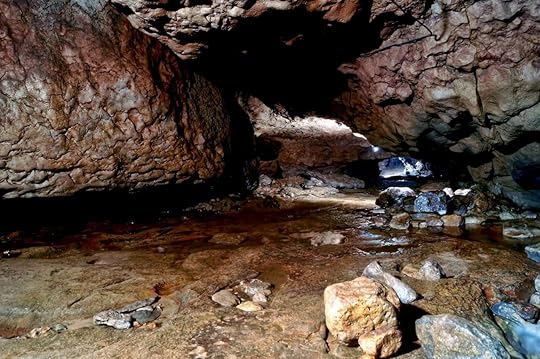
Photo: Anbu Paramanandham/Shutterstock
Fewer than 40 miles from Shillong, Meghalaya’s electric capital, lies the wettest place on Earth: Mawsynram. Close to there is Krem Puri, the world’s longest sandstone cave. Stretching a startling 15 miles, the cavern is a dream come true for a caving enthusiast. Krem Puri also contains what is believed to be dinosaur fossils from 70 million years ago. Do not go caving during the rain-soaked monsoon months of May to September. In winters, when the climate is drier, Meghalaya Adventurers’ Association (MAA) organizes annual caving expeditions in the state.
Underneath its lush hills, Meghalaya is home to mysterious turns and twists, hiding captivating stories of a bygone era. While some 490 kilometers of caves have been already mapped, there’s more begging to be explored, mainly in the East Khasi Hills. About 1,000 caves and cave systems in Meghalaya are either fully or partly explored. While adrenaline junkies may prefer longer caving expeditions, Arwah Caves is a fascinating experience for beginners. Tucked inside the jungle in Cherrapunji, locally known as Sohra, Arwah Caves is a limestone cave with fossils, stalagmites, and stalactites. As it’s not on many people’s radar, its charm lies in its eerie silence. This contrasts with the noisier, much-visited Mawsmai Caves a few kilometers away.
2. You can kayak in crystal-clear waters.
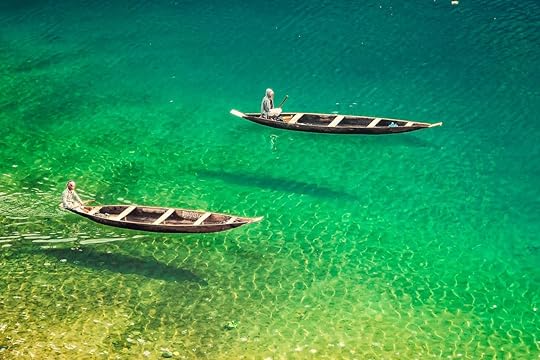
Photo: Abhijeet Khedgikar/Shutterstock
Water-sport enthusiasts frequent Shnongpdeng, a little village located close to the Bangladeshi border. Here, you can either stay in a cute bamboo hut by the Umngot River or in a tent. During monsoons, the water is muddy brown and not ideal for kayaking. When October nears, the rains disappear, and the river turns an inviting blue-green shade. Apart from kayaking, tour companies also organize boating, canoeing, and cliff jumping.
Tucked away in the lesser-known West Khasi Hills, Mawphanlur has 10 lakes and very few houses. You can either paddle in a rented kayak or canoe, or hike its many peaks in hopes of discovering a new lake to yourself. Traveller’s Nest is the only accommodation option here.
With its impressive bodies of water and rocky structures, Mawlyngbna is another place for kayakers. You can easily reach Mawlyngbna from Mawsynram. It’s not only one of the best water-sport destinations in the region, but the tiny village is also home to fossils and a split rock, where you get a stunning view of the nearby Bangladeshi plains.
3. The state is home to Asia’s second largest river island.
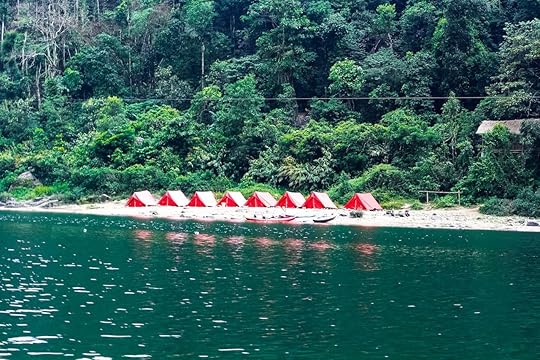
Photo: Focus_Redefine_Fotography/Shutterstock
While East Khasi Hills has become better known within India, West Khasi Hills is still an off-the-beaten-path destination. The biggest town of West Khasi Hills is Nongstoin. From there, a bumpy taxi ride takes you to Nongkhnum Island, Asia’s second largest river island. With paddy fields nestled between cloud-hugging mountains, the journey to Nongkhnum is a fascinating one. You can travel to Nongkhnum with Chalo Hoppo, which organizes night camping on the island. While you are in Nongkhnum, don’t forget to visit Weinia Falls.
4. There are living root bridges.
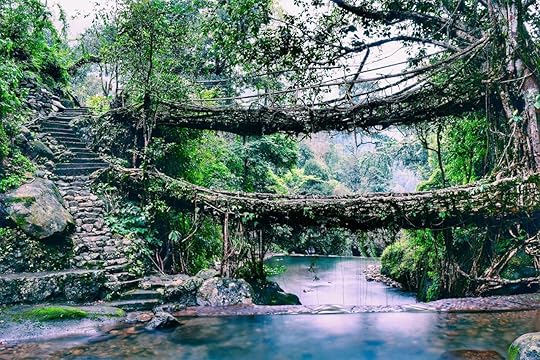
Photo: WanderDream/Shutterstock
Some hundreds of years ago, locals in Meghalaya weaved together the above-ground roots of Indian rubber trees to form bridges across rivers swollen by monsoon rains. (The bamboo they’d previously used to construct bridges would often break.) It takes up to 20 years for the tangled root web to connect the two river banks, but then the root bridge only grows stronger with time. These impressive structures are scattered across Meghalaya, but only a few are accessible today. In Nongriat, a two-level root bridge connects the banks of river Umshiang, giving it its famous name, “Umshiang Double-Decker Living Root Bridge.” It’s only accessible by foot after first climbing 3,500 steps to reach Nongriat from nearby Tyrna.
In the south, a tiny, well-organized village called Mawlynnong has earned the title of “Asia’s Cleanest Village.” Near Mawlynnong in Riwai, a single-decker root bridge attracts travelers from all over the world. Unlike the bridge in Nongriat, the root bridge in Riwai is easily accessible and only takes 15 minutes to reach from the main road.
5. Sohra is home to India’s tallest plunge waterfall.
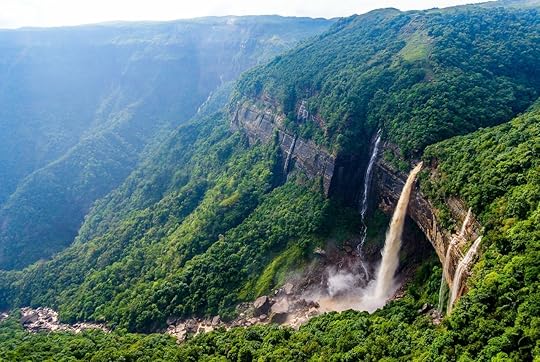
Photo: SOURADIP HALDER/Shutterstock
The most visited area of Meghalaya is the subdivision of Cherrapunji as the region is widely known. Just try not to call it that. The official name is now Sohra, and given that the old name was handed down during British rule, Sohra is the name locals prefer. Sohra is home to India’s tallest plunge waterfall, Nohkalikai Falls, which rushes down the jungle-clad hills, forming a blue base pool. A few kilometers away, locals and visitors from neighboring Assam state frequent the Dainthlen Falls on weekends, where music and BBQ sessions are aplenty. Seven Sisters Falls, locally known as Nohsngithiang Falls, gets its name from the seven streams that tumble down the East Khasi Hills to nearby Bangladeshi plains.
Apart from these better-known falls, Sohra is home to hundreds of hidden falls such as Wei Sawdong Falls, masked by the dense forests near Dainthlen. Waterfalls come to life during monsoons and new, tiny cascades are given birth by the heavy rains across the state.
6. It’s home to one of the world’s last matrilineal tribes.
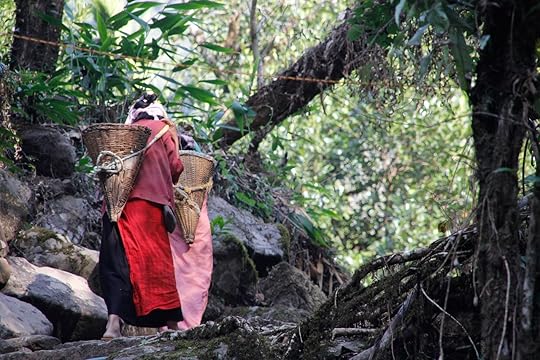
Photo: Gregorioa/Shutterstock
The Indian state of Meghalaya has three major hill areas: Khasi Hills, Jaintia Hills, and Garo Hills. Although Khasis, who make up the main tribe in Meghalaya, are scattered across the state, Khasi Hills is their historic home. The Khasi tribe follows a matrilineal and matrilocal system. In fact, theirs is one of the world’s last few matrilineal societies. While the community is still patriarchal, as in many parts of the world, the women receive the utmost respect — making it one of the safest solo female travel destinations in India.
That said, Meghalaya is still very remote, and if you’re a first-timer, it’ll be a bit harder to navigate across its rain-fed subtropics. Organized tours to Meghalaya can be booked via many Northeast Indian travel companies, such as Greener Pastures, which combine a bit of culture with your usual outdoor adventures.
7. Shillong is the Rock Capital of India.

Photo: Café Shillong/Facebook
Surrounded by moss-clad hills, serene lakes, and hidden waterfalls, Shillong is called the “Scotland of the East” by the British. Today, the city center is just like any other chaotic Asian city. However, the hill capital is home to a happening fashion scene and an electric music culture, giving Shillong the name the “Rock Capital of India.” Live jam sessions happen almost every day in Shillong. Laitumkhrah is Shillong’s hip neighborhood, where the café culture is one of the coolest in India; get your caffeine fix in the area at Café Shillong. With its cheerful vibe and warm, welcoming locals, Shillong is the perfect place to end your adventures in Meghalaya. 

More like this: The ultimate guide to road tripping through India
The post Why India’s Meghalaya state is an outdoor lover’s dream appeared first on Matador Network.

7 different food etiquette rules

If you’re constantly leaving food on your plate and forgetting to say thank you, you’re not being rude. According to Chinese and Indian customs, you’re being polite. The US has firmly ingrained notions about what constitutes good dining etiquette: never burp, always use utensils, forks on the left, knives on the right, and so on. But in other countries, it’s completely different — and in some cases, entirely the opposite. Being on (what you think is) your best behavior might actually get you kicked out of a pub in Hungary, or earn you some admonishing stares in China. Do your research, or else you might commit some pretty glaring dining blunders. Here are seven of the most fascinating dining rules and superstitions from around the world to keep in mind as you travel.
1. Always leave food on your plate in China.

Photo: its_al_dente/Shutterstock
In the US and many other Western countries, we’re taught that it’s rude to leave food on your plate because it somehow indicates you didn’t enjoy your meal. That’s not so in China. Finishing your plate when dining at someone’s home in China suggests the food wasn’t filling enough, and that your host was skimping on the portion size. Always leave behind a little food to show the host that their meal was filling and satisfying.
2. Don’t say “thank you” in India.
One of the first etiquette lessons many of us learn as children can be thrown out the window in India. Saying “thank you” to just about everyone — from the gas station attendant to the restaurant waiter to our closest friends — is commonplace in Western culture, but in India, it can actually be insulting. “Thank you” is reserved solely for formal occasions. In more common, casual settings, thanking someone implies that they’ve gone out of their way for you, awkwardly calling attention to acts of kindness that are just assumed. Things like passing dishes, or receiving a meal from your host family, are simply part of a close relationship — not extraordinary acts requiring thanks. Saying “thank you” suggests your relationship is more formal than friendly.
Conversely, when Indians move to the US, they often have great difficulty saying “thank you” in casual settings. So if you’re dining with someone from India and they don’t say “thank you” when you pass them a plate, they’re not being rude. They’re just not used to it.
3. Slurp your noodles in Japan.

Photo: Rachata Teyparsit/Shutterstock
We all know a loud eater. They’re that person who we try not to sit next to when they’re eating spaghetti, because we’ll hear that annoying slurping sound all night. Well, in Japan, that sound isn’t annoying; it’s a sign that you’re thoroughly enjoying your meal. In addition to being a signal of respect, slurping is also believed to improve the flavor of noodles and allows you to enjoy hot food more quickly. Coating the noodles in saliva cools them down, meaning you don’t have to wait as long before you can dive in. So, if you’re in Japan, there’s no need to delicately twirl your noodles on a spoon or cut them into fragments. Slurp away!
4. Never salt your food in Egypt.
It’s a common habit to grab the salt and pepper and add a little extra flavor to your food. Salt is so ubiquitous that we think nothing of adding a dash here and there, and we certainly mean no insult by it. In Egypt, it’s a completely different story. Salting your food in Egypt is considered a huge insult, and when you think about it, it makes perfect sense. The chef prepares your food to taste a certain way. When you add your own spices, it effectively changes the flavor, implying the dish was inadequate as presented. If there aren’t already salt and pepper shakers on your table at a restaurant, don’t ask for them. The same goes — perhaps even more so — for dining in someone’s home.
5. Flipping a fish is bad luck in China.

Photo: gkrphoto/Shutterstock
If you find yourself eating a whole fish in China, you might feel the urge to turn it over to get to the meat on the other side. But we’ll warn you right now — don’t do it. To turn a fish over, that means you have to turn the bones over, which symbolizes turning your back on someone or becoming a traitor. It’s also a no-no according to an old fishing superstition, which says that doing so could cause a boat to capsize. Whatever particular superstition your hosts may subscribe to, turning your fish over is generally frowned upon, so avoid it if you can. To get at the meat on the other side of the fish, just have patience and eat straight through it. Less efficient, sure, but you’ll draw fewer judgmental looks.
6. The oldest person takes the first bite in South Korea.
In the US, it’s rude to start eating until everyone has been served their food. This can be agonizing if one person’s meal is taking forever while our dish stares at us all hot and tantalizing. In South Korea, they take it one step further. No one is permitted to take a bite until the oldest person has started eating — a custom that’s viewed as a sign of great respect. It’s also polite to wait for the oldest person to sit down before taking your own seat. Yeah, there’s a lot riding on the oldest person in the room, so you’d better hope they’re hungry.
7. Don’t “cheers” drinks in Hungary.
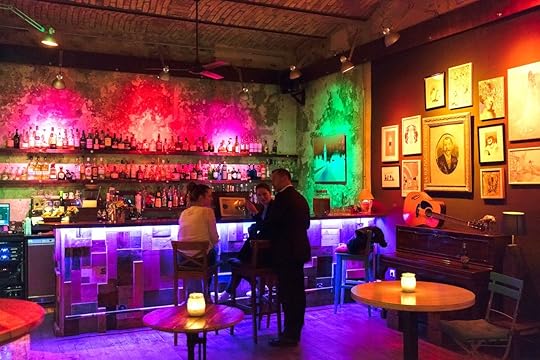
Photo: posztos/Shutterstock
In an ordinary bar setting, if you’re that one person who doesn’t clink your glass with your friends, you look like the odd one out. In Hungary, skipping the “cheers” could actually save you from being scolded. Not clinking glasses in Hungary dates back to 1848, when the Austrian government suppressed a Hungarian uprising. Austrian leaders executed Hungarian rebels, and then celebrated by publicly clinking their glasses together. Although some say the “no clinking” tradition was only supposed to last 150 years (and therefore end in 2000), it’s still observed by many across Hungary. 

More like this: Business etiquette tips from around the world
The post 7 most fascinating food etiquette rules around the world appeared first on Matador Network.

Best European sleeper train routes

The real traveler knows that transportation is not just about getting from A to B, it’s a journey to be lived and savored. Sleeper trains are the epitome of “enjoying the ride,” but somehow they’ve almost been forgotten. There aren’t that many services still running in Europe, but it’s worth adjusting a trip to include one. Not only are they more environmentally friendly than planes and cost-effective, but they are unequivocally the most romantic way to travel.
1. London to Fort William on the Caledonian Sleeper

Photo: Joe Dunckley/Shutterstock
After a jam-packed weekend in England’s capital visiting museums and eating in noisy street markets, the perfect antidote has to be a trip on the Caledonian Sleeper, which whisks passengers away to the beauty of the Scottish Highlands. With a twin room or first-class cabin, you can have access to the lounge car, which serves Scottish and London craft beer, Champagne, and a plethora of whiskies. First class also gets you an evening meal which boasts products from sustainable Scottish sources. Early risers are rewarded with the spectacle of the sunrise over the mountains and lochs before the train arrives at Fort William, right at the foot of Ben Nevis, the highest mountain on the British Isles.
Cost starts from $260 for a twin room.
2. Paris to Venice on Thello Trains
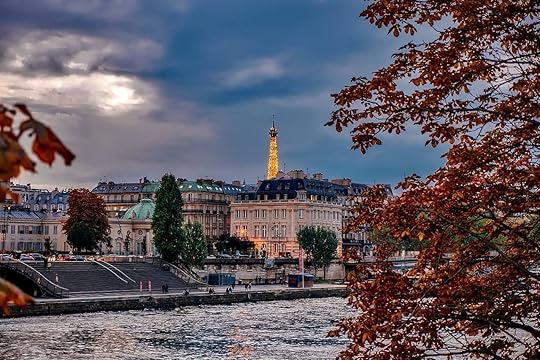
Photo: Thello/Facebook
This journey has an air of the Grand Tour about it — leaving the city of elegant boulevards and café culture at dusk and waking up in the mesmerizing floating city of Venice. Unsurprisingly, the train’s dining car takes center stage with its classic French and Italian dishes. From bed, you can watch the snowy Alps glide by and admire the Italian lakes at sunrise. A premium cabin gets you a free breakfast, after which you can hop off the train, wide-eyed into the morning sunshine to explore Venice’s labyrinth of canals and richly decorated palaces.
Cost starts from $97 p/p for a two-bed cabin.
3. Moscow to St. Petersburg on the Red Arrow

Photo: Anton_Ivanov/Shutterstock
The words “Russian sleeper train” conjure up images of plush red drapery, white tablecloths, and lots of curtain tassels. Thankfully, the Red Arrow fulfills that fantasy admirably. A first-class cabin includes bedding, newspapers, and meals; for those looking for modern luxuries too, there’s air conditioning and TVs in the VIP cabins. The Red Arrow is one of Russia’s most famous trains and it even has its own theme song that plays on departure from Moscow. The route takes passengers directly from the capital to the country’s second largest city and cultural center, St. Petersburg. Putting aside the fact that this route starts and ends in two of the world’s most culturally rich cities, the train journey is an experience in itself and is the best way to travel overland in Russia.
Cost starts from $114 p/p for a first-class cabin.
4. Helsinki to Kemijärvi on the Santa Claus Express
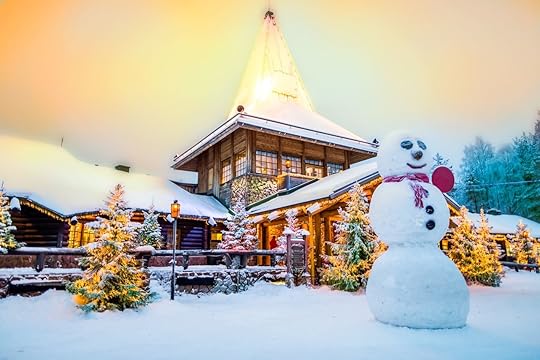
Photo: Aleksei Verhovski/Shutterstock
The route for this service starts in Finland’s capital, Helsinki, where you can swot up on the latest Scandinavian design trends in its Design District, and visit the Kamppi Chapel of Silence, an icon of minimalist Nordic architecture. The train then winds its way north to Lapland. The most important stop is Rovaniemi, the home of Santa Claus, where you can visit the man himself and his reindeer at the Santa Park. The final destination is Kemijärvi, a place for walking and exploring nature, especially around the beautiful Lake Kemijärvi. The radical change in day length between summer and winter means you can have very different experiences on this journey depending on when you go.
Cost starts from $56 p/p.
5. London to Venice on the Simplon-Orient-Express
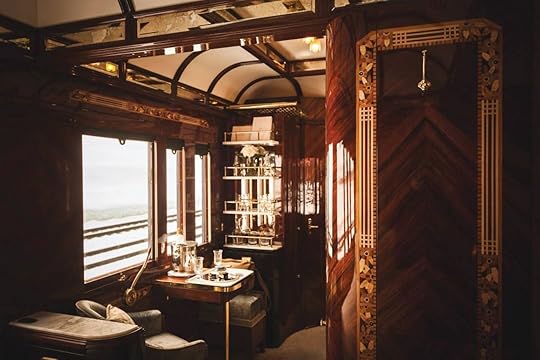
Photo: Venice Simplon-Orient-Express/Facebook
Most don’t realize that it was on this Orient Express from London to Venice that Agatha Christie’s most famed murder took place. While passengers will naturally expect a less definitive end to their journey, the novel adds yet more romance and glamor to this extra-luxurious trip. Over the one and a half day journey, you can lounge elegantly among brocaded curtains lit by soft lamplight in this self-proclaimed “icon of art deco design.” The Champagne Bar whisks passengers straight back to the roaring ‘20s, and in the restaurant you can try local delicacies like Brittany lobster. At $4,600 per person, it’s not exactly going to save you money on accommodation, but that does include a Bellini and brunch as you wind through Kent, a four-course dinner upon your arrival in France, breakfast with a view of the Alps, and afternoon pastries as you near the scintillating waters of the Venetian lagoon.
Cost starts from $4,600 p/p.
6. Trondheim to Bodø on Norwegian Rail
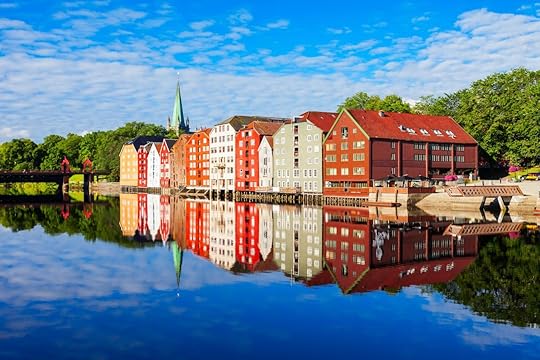
Photo: saiko3p/Shutterstock
The starting point of this train journey is Trondheim, which was the capital of Norway during the Viking Age and is home to Scandinavia’s largest medieval building — the ornately carved Nidaros Cathedral. The journey ends in Bodø, and here you can find ferries to the Lofoten Islands, where little red fishermen’s cabins sit atop snow-dusted rocks. This journey can be done as part of an Interrail trip and is included in the Norway Interrail Pass.
Cost of an Interrail Pass starts at $203.
7. Innsbruck to Cologne on the Nightjet
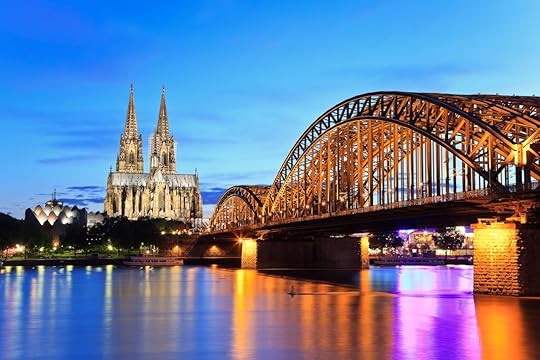
Photo: Noppasin Wongchum/Shutterstock
Clean, modern convenience is the highlight of this service. From Innsbruck in the Tyrolean Alps, an ideal spot for hiking or more serious climbing along the Via Ferrata, this route takes you right through Germany to Cologne. On this route, you’ll want to wake up early in the morning as the train is following the Rhine Valley Line, famous for its castles and vineyards. The train’s sleeping compartments include deluxe double deckers with ensuite bathrooms. Booking a sleeper compartment also gets you a welcome drink, newspaper service, toiletries, and breakfast. Everything is characterized by quiet, understated Austrian efficiency.
Cost starts from $102 p/p in a double compartment. 

More like this: 9 luxurious train trips that beat any first-class flight
The post The 7 most glamorous sleeper trains in Europe appeared first on Matador Network.

JetBlue will send you on a free trip

JetBlue wants to give you and a friend a free trip to anywhere in the world — the catch is, you don’t get to choose where. As part of its November “Jetblue for Good Month,” the airline is sending 50 people on a free trip, in exchange for doing volunteer work while you’re there. Work will be focused on youth and education, community, and the environment. The destination — called “Destination Good” — is secret until the morning of departure. So if you’re a picky traveler, or you can’t live without a fixed itinerary, you might want to skip this one.
Icema Gibbs, JetBlue’s director of corporate social responsibility, said in a statement, “We chose Destination Good as this year’s location to reinforce that doing good can happen anywhere and anytime — be it in the air, on the ground, or even in your neighborhood.” While JetBlue hasn’t finalized the itinerary, you can expect to participate in a variety of service activities, ranging from helping in local schools to conducting beach cleanups.
The flight departs on November 27th from New York’s JFK airport, and returns on November 30th. To apply, you must fill out a survey about your prior volunteer experience and explain why giving back is important to you. Applications can be submitted online, or at pop-up kiosks that will open across New York City and Los Angeles from October 16th to 26th. 
H/T: Travel & Leisure

More like this: 7 rights all air passengers have and should know about
The post JetBlue wants to send you on a free volunteer trip to a mystery location appeared first on Matador Network.

October 16, 2018
Why you should ski the Pyrenees
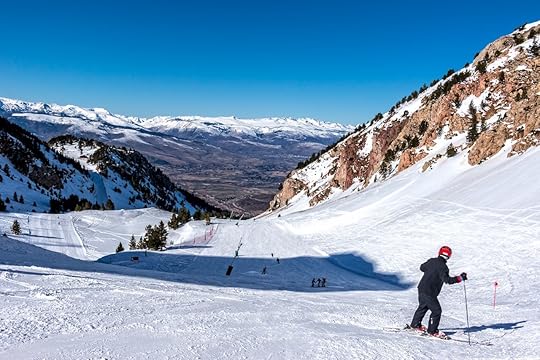
If you’re planning a ski trip to Europe, the 300-mile-long Pyrenees Mountain range dividing Spain from France is worth your attention. La Cerdanya valley, smack in the middle of that mountain range, offers access to a variety of ski areas, a melange of languages, and three countries. Plus it’s easy to get to, chill, and very affordable. Here’s why you should base your next ski trip in the Pyrenees’ La Cerdanya Valley.
Getting to La Cerdanya is simple.

Photo: Jordi Prat Puig/Shutterstock
La Cerdanya Valley is fewer than 90 miles from Barcelona city limits. You can reach it from downtown Barcelona in fewer than two hours on an excellently maintained mountain highway. It’s an easy weekend excursion — even a day-trip — to tack onto a winter visit in Barcelona. You can rent ski gear in the city or most of the mountain resorts, as well. Once in the valley, the closest resort is 15 minutes uphill while the resorts in France and Andorra are another 30 to 60 minutes away.
The towns have unusual names — and a lot of charm.

Photo: catalunyastock/Shutterstock
La Cerdanya is a valley that stretches from Spain to France and touches on the mountain principality of Andorra. The main town is Puigcerdà on the Spanish side, which, when you cross a river, becomes the smaller town of Bourg-Madame on the French side. About 10,000 people call the combined Spanish-French city home.
Elsewhere in the valley, much smaller villages have names like Das, Alp, Prats, and Urtx on the Spanish side. Across the border in France, tiny locales have retained such ancient names as Ur, Err, Llo, and Eyne. These clipped words and longer, equally unusual names like Soriguerola and Saillagouse are the appellations of dozens of hamlets spread across La Cerdanya, each home to anywhere from 50 to 1,500 inhabitants.
Particularly on the Spanish side, the villages are built using the region’s classic taupe stone. In the dead of winter — when the grasses that feed the valleys’ horses and cattle are brown — it can lend the valley a somber hue. It’s livened up by the green forests and white snow of the mountains that frame the valley, though, and each winter, for a few glorious days and sometimes weeks, snow blankets the entire valley.
La Cerdanya has a mix of cultures.
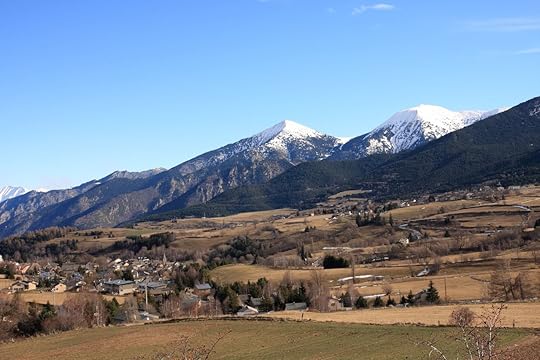
Photo: arenysam/Shutterstock
The Cerdanya valley puts you in proximity to three countries: France, Spain, and the independent, mountainous principality of Andorra. While you’ll hear plenty of Spanish spoken on the slopes, the language of the towns is Catalan and French. The Spanish side of La Cerdanya is part of the Catalonia region of Spain where the preferred language is Catalan. (We’ve used the Catalan spelling for La Cerdanya; the Spanish spelling would La Cerdaña.) Especially in the small Pyrenees towns, Spanish hasn’t made the inroads that it’s made in bigger cities like Barcelona. While the locals can speak Spanish, they prefer to converse in Catalan. In Andorra, which is a short drive from the valley, Catalan is the official language.
In La Cerdagne française, as the French half of the valley is called, you’ll notice a distinctly French vibe. Besides the obvious tell — everyone speaks French — lunch and dinner hours are earlier, they’re playing hip music at the ski resorts, and the food at the lodges makes the trek across the valley worth it.
You have an endless variety of ski hills.
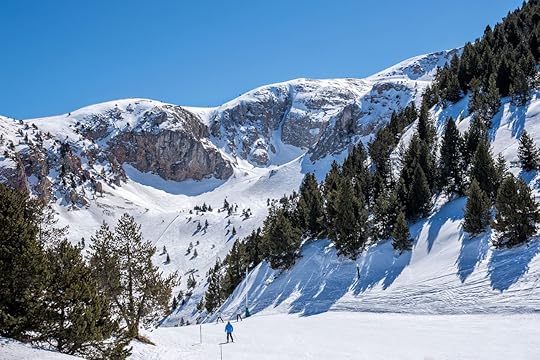
Photo: Digoarpi/Shutterstock
The closest mountains to Barcelona are the Spanish resorts of Masella and La Molina. Masella is friendly and small — but not too small. It has a total of 18 lifts although that number includes magic carpets for beginners and several poma lifts, as well. It has plenty of steep intermediate runs, some of which are lined with pine trees, but not many mogul runs or really challenging pistes. The lower section is ideal for young beginners.
La Molina is the big destination resort for Barcelonans, offering tubing, ice skating, cross-country skiing, and snowshoeing in addition to skiing and snowboarding. With 63 slopes and a gondola that takes you above the treeline, La Molina is nothing to sneeze at. It’s hosted skiing and snowboarding world championships, and while it’s more of a green and blue (beginner and intermediate) mountain, it does list seven black (advanced) runs on its trail map. A lift from La Molina will take you to the top of Masella, and a one-day adult ski pass with access to both mountains is just over $50.
On the French side, the resorts have a chiller vibe than La Molina. Les Anglès is one of the bigger resorts with picturesque runs bordered by evergreens. The slopes could be steeper, but as the most developed ski area, Les Anglès has good snow-making abilities to get you through sluggish snow seasons. Formigueres is a small ski spot with few lifts, but it has some long pistes with decent incline and a handful of gladed runs through the trees. The two-story lodge serves a tasty lunch and offers outdoor seating upstairs on a spring day.
Porte-Puymorens lies on a road that slices through the mountains and eventually leads to Andorra. The chairlifts are slow relics, but Porte has some steeper chutes that are very fun after a fresh snowfall. La Cambre d’Aze and Font Romeu are among the other French options.
You can ski in three countries in a weekend.

Photo: Enia/Shutterstock
The backside of Porte Puymorens looks out towards the country of Andorra. After a day skiing in Spain, you could spend the next morning at Porte Puymorens in France then hop back in your car and continue on the road heading east from the Cerdanya Valley. You’d be in Andorra in no time — although you’d have to stop and show your passport since Andorra is not part of the EU. You could hit three countries in two days if you really wanted to.
Even though it’s not in the EU, Andorra uses the euro as its currency, and the territory is run by two EU member countries. Andorra is technically a principality whose co-princes are the president of France and Spain’s Bishop of Urgell. The entire 180-square-mile country lies within the Pyrenees mountain range with its capital city, Andorra la Vella, wedged into a narrow valley between alpine peaks.
Andorra is full of ski resorts; the first one you’ll reach coming from La Cerdanya is Pas de la Casa. It’s now under the umbrella of the huge Grandvalira Andorra, whose adjoining ski areas have a combined 66 lifts and over 120 miles of runs. With so many pistes, you’ll find plenty of advanced options in the mix, as well as blues and greens for more novice skiers. If you thought Grandvalira’s monopoly on ski areas would jack up prices, you’d be happy to know that, at the current exchange rate, a one-day pass for the upcoming 2018-1029 ski season is only $58 for adults, $52 for teens, $39 for kids six to 11, and free under that.
In France, the morning coffee break is unbeatable.

Photo: NK/Shutterstock
One of the highlights of a day skiing on the French side is stepping into the lodge after a couple early morning turns to warm up with a perfect espresso and a pain au chocolat that simply couldn’t be any better. This region of France doesn’t have a nearby big city like Barcelona, and most moneyed Parisians will opt for the Alps for their ski getaways. While some of the French resorts like Les Anglès have high-speed lifts and updated facilities, a few of the French lodges are in desperate need of an upgrade.
Yet even at these, the croissants are amazing. Porte-Puymorens has a ski shack close to its steeper runs that’s practically crumbling before your eyes. But close those eyes and savor the espresso and pain au chocolat, and you could be at a café in Paris’s Marais district. Likewise, the music at this ski shack seems too eclectically hip for a tiny mountain spot near the border with Andorra.
In Catalonia/Spain, you can have a filling lunch off the mountain.

Photo: Takin ‘Shotz/Shutterstock
While those French mid-morning snacks are unbeatable, the same can’t be said for the options in Spanish resorts of Masella and La Molina. Here, locals have a quick breakfast at home and take a break for sustenance at 11:00 AM. A weird snack of choice on a cold day is hot broth — literally the kind of chicken stock you use to make soup, heated and served in a styrofoam cup. We suggest an alternative: Order a coffee and make sure you have an energy bar in your jacket pocket.
A big reason the food choices are so meager on the Spanish side is that the locals eat their big “midday” meal after they’re done skiing. Great lunch options on the valley floor compensate for the poor on-mountain fare. Catalan ski teams and ski clubs quit training at 2:00 PM so that families can have a proper weekend lunch. There’s really nothing better than making a 3:30 PM lunch reservation, enjoying a languid meal with lots of wine until 5:30 PM, then rolling back to your hotel or lodge for a good movie on the TV or your computer and crashing out early.
You could have that long lunch on a Spanish island surrounded by France.
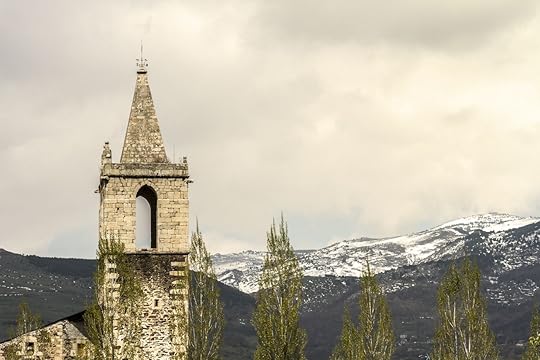
Photo: fototip/Shutterstock
The “island” part may be overselling things. The village of Llívia is not really an island as in a body of land surrounded by water. But it is a body of Spain surrounded by France. A 1659 treaty that ended a conflict between Spain and France left Llívia as part of Spain even though it lies over a mile within French territory. The best place to have lunch on that Spanish island is the Formatgeria de Llivia, a restaurant in a former cheese factory. While fondues and raclettes are a big feature on the menu, you could also order roast duck, veal, or cod. Between courses, kids run around in the green space outside while adults uncork yet another bottle of wine.
Other excellent lunch places include Can Borrell and Paller de Queixans, with its elegant dining room in a big stone house. A low-key choice on your way out of the valley back to Barcelona is the Fonda de Cobadana in the town of Urus.
You can choose early or late dinner times — depending on the side of the valley.
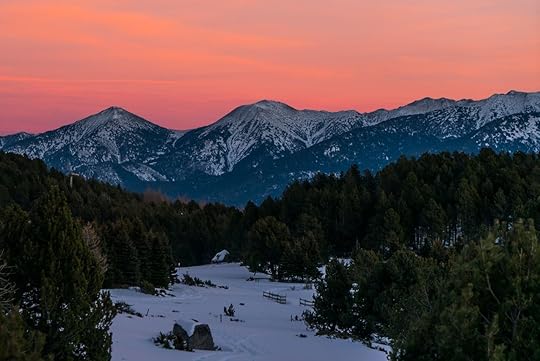
Photo: Emilien Artaud/Shutterstock
If you’ve skied on the French side and eaten lunch on the mountain — our vote goes to Les Anglès for the best ski lunch in the valley — you may decide to stick to the French side for dinner, too. Try La Crapahuter or Tablet de Saveurs. If you attempt to eat dinner on the Spanish side, you may find yourself waiting until 10:00 PM to dine, which is tough to do after a day of skiing but could be appealing to some night owls.
Also on the French side is one of the best markets, which is perfect if you’ve rented an Airbnb and have cooking facilities. The Carrefour market is a few minutes drive from the Carrefour market in Spanish Puigcerdà — but it’s stocked completely differently. You’ll find tasty whole grain bread, a bigger selection of spices, and much more variety in the groceries than you will on the Spanish side.
There are plenty of accommodation options.

Photo: Jordi Prat Puig/Shutterstock
You’ll find lots of hotels near La Molina and Masella, as well as in the city of Puigcerda. The fanciest hotel options on the Spanish side of the valley floor are the over-the-top, castle-like Torre de Remei, Villa Paulita in the town of Puigcerdà, and the Chalet de Golf Hotel. On the French side, you’ve got Le Crapahuteur, Hotel Restaurant de Lac, and Auberge Les Ecureulis — in addition to hotels near resorts like Les Anglès. Andorra is packed with accommodations options.
Then again, you could always come up for a day from Barcelona and head back down at the end of the day. But with a long après-ski lunch waiting for you, we bet you’d rather order that bottle of wine and stay in La Cerdanya for the night. 

More like this: 3 awesome ski vacations you should be planning now
The post Why you need to ski in the Pyrenees’ La Cerdanya valley appeared first on Matador Network.
Getting around Chicago without a car
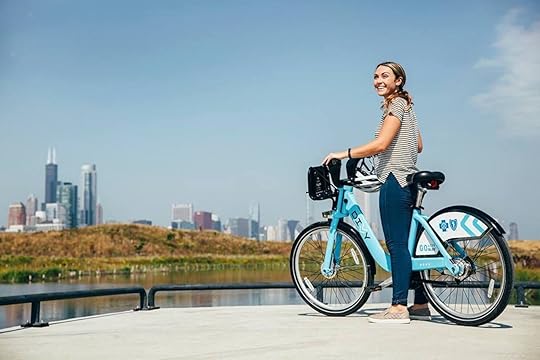
If you’re planning a trip to Chicago or even moving to the city, the transportation situation can seem overwhelming. A quick look at a map shows the city to be absolutely massive, but rest assured, almost anywhere you’ll likely go in Chicago is probably within a fairly small area of the city and quite safe. With many good public transportation options, skip the hassle of traffic and driving and try out these tips for getting around Chicago as locals do.
1. Go on foot.
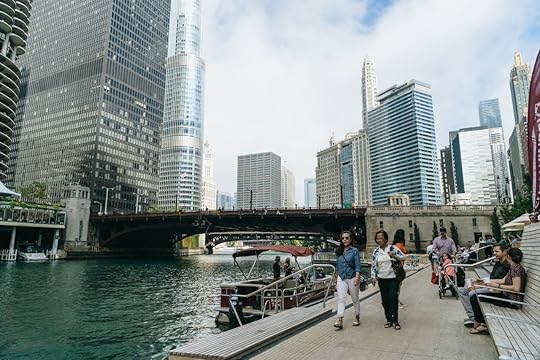
Photo: ULU_BIRD/Shutterstock
Chicago really is a huge city, and if you actually had to cover it all on foot, it would be pretty much undoable. However, whether local or visitor, you’re usually in just a handful of neighborhoods, many of which are adjacent and easy to walk around and between. In any neighborhood, you’re almost always within a one-mile walk of anywhere else in that hood or a neighboring one. The downtown tourist sights are also easily walkable. The actual loop is quite small and everything in it can be reached on foot. Within a few miles, you can cover Millennium Park, Buckingham Fountain, Monroe Harbor, and the Riverwalk pretty easily in a couple of hours.
2. Use Ventra.

Photo: Ventra Chicago/Facebook
Ventra isn’t an actual method of transportation, but it’s so important that it needs its own section here. Ventra is the payment system for all public transport in Chicago and the suburbs. A Ventra card can pay for rides on city buses and trains, suburban Pace buses, and Metra commuter trains. You can buy a Ventra card at any CTA train station, as well as some other locations, such as grocery stores and Walgreens. A card costs $5, but if you register the card online or in the Ventra app, the money is added to your account in transit value. If you’re the type to plan ahead for your trip, you can order one online and have it mailed to you before you go.
3. Ride the train.

Photo: Chicago Transit Authority/Facebook
As much as Chicagoans like to gripe about how bad our trains are, in reality, they are pretty decent. Most famously known as “The L,” an abbreviation for “elevated line,” subway trains are actually split between elevated, ground level, and subway lines. All trains in the city are part of one system, the Chicago Transit Authority (CTA).
You can ride CTA trains as far as you like, anywhere they go, making free connections between any lines at any stations where connections are available, all for one price (currently $2.50). If you use your farecard again within two hours of the first ride, you activate a transfer that costs 25 cents and gets you two additional train or bus rides in that two-hour window. The one exception to this pricing is at O’Hare Airport where the fare is $5, including two transfers. You can also buy one-, three-, seven-, and 30-day passes, which will pay for themselves if you plan on riding the bus and train a lot. All payments and passes are handled by Ventra.
4. Catch a bus.
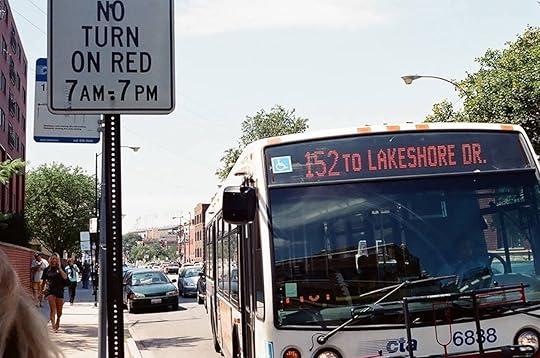
Photo: Chicago Transit Authority/Facebook
In places where the trains don’t run, CTA buses have you covered. They use the same Ventra payment system as the trains, and the 25 cent transfers mentioned above work between trains and buses and vice versa. You should definitely use the transit tracker in the Ventra app if you’re taking the bus, and if you have to be on time, you should leave a cushion. CTA buses tend to clump up, so you might miss two or three buses in a row and have a long wait for the next one.
5. Ride the Water Taxi.
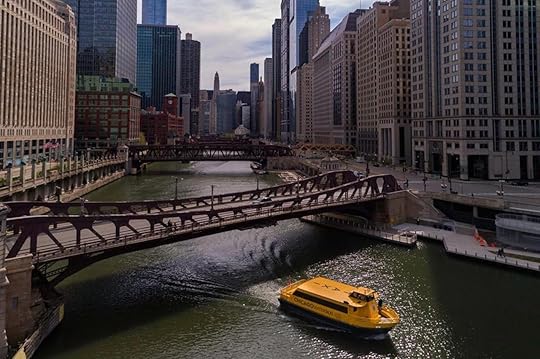
Photo: Chicago Water Taxi/Facebook
One of the most unique ways to get around the downtown area is to take the Chicago Water Taxi. These yellow boats cruise the river, making stops throughout downtown. They get as far north as North Avenue around Goose Island and as far south as Chinatown. A one-way ride is $6, and there are other passes available. There is less outdoor seating than on the big riverboat tours, and since these boats are more for commuters than tourists, there is no actual tour given. Still, they’re a fun way to get around, and if it works for your itinerary, definitely climb aboard.
6. Take the Metra.

Photo: Metra/Facebook
Metra is the Chicago area’s commuter rail system. These trains originate in downtown and head out in all directions, making a few stops in the city and then going deep into the suburbs. These trains are faster than CTA trains but run less frequently. They cost a few bucks more for rides in the city and get up over $10 for further rides. If you’re going to check out a concert at Ravinia or see the Chicago Botanic Garden, Metra is definitely your best bet. You can track trains and buy digital tickets using the Ventra app. The unlimited weekend passes can pay for themselves very quickly.
7. Pedal on a Divvy bike.

Photo: Divvy Bikes/Facebook
Divvy Bikes is Chicago’s bike-share program, and it’s a great way to get around Chicago if you don’t have a car. You can take a bike from any of the nearly 600 stations around the city and return it to the same spot or a different station when you’re done. There are a few different pricing options depending on what you need the bike for.
For locals or anyone who spends a good chunk of time in Chicago, the $99 annual pass gives unlimited rides of up to 45 minutes each. If you’re just visiting and need some quick A to B trips, single rides can be purchased for $3 per 30 minutes. Riders who want to use their bike to explore places like the Lakefront trail, city parks, or the 606 bike trail should go for the $15, one-day Explorer Pass, which will give you unlimited rides, each up to three hours, over a 24 hour period. Whichever option you go with, you should download the Divvy app, which makes it super easy to find a station and pay for whatever pass you need.
8. Get a shared car or taxi.

Photo: Zipcar/Facebook
Sometimes there’s just no substitute for a car that can take you directly from point A to point B in climate-controlled comfort. If you just need a car for a few hours and don’t want to go through the hassle of renting, try a car-sharing service like Zip Car, which has pickup and dropoff locations around the city. Chicago, of course, has the usual ride-hailing services of Uber and Lyft, which are always convenient in a pinch. And there are regular taxis always out cruising around. They tend to be a few bucks more than the ride apps, but they don’t have surge pricing, so sometimes they come out cheaper. There are plenty of companies, all easily identifiable as taxis. All are equipped with meters, and the drivers pretty much always use them honestly. 

More like this: 7 perfect things to do on a fall afternoon in Chicago
The post How to get around Chicago like a carless local appeared first on Matador Network.
Are TripAdvisor and Yelp credible?

The more skeptical among us would have you believe that online review sites are all fake news. TripAdvisor is full of good reviews businesses pay for. Yelp is an online mafia of extortionists. In an era when anybody can pretty much say anything online and people will believe it, it’s hard to know how much of what we see on online review sites is true. Equally as difficult is determining how many allegations of review fraud are also true. Are review sites completely discredited? Or are they still good, honest, open forums that we can use to make important decisions like where to eat brunch?
A September report in The Times of London alleging nearly one in three TripAdvisor reviews were fake cast some serious doubt on the site’s credibility. This came on the heels of a well-publicized Vice feature in which a woman made the shed in her backyard the best-reviewed restaurant in London using a combination of fake TripAdvisor reviews and pictures of food made from bathroom products. Neither exactly bolstered faith in the online review site.
But the Times study’s methodology wasn’t really specified. Most of the investigation was done by an outside company called Fakespot, which alleges that it can determine fake reviews with a specialized algorithm. The problem is that it doesn’t have near the resources at its disposal that it would need to reliably spot fake reviews.
“The algorithm that the company used is very questionable; I don’t think anybody in the travel tech space is taking it very seriously,” said Tim Hentschel, the CEO of HotelPlanner.com. “There might be ways they can get a 60 to 70 percent accuracy rate by looking at certain words that come up a lot, either very sloppy fake review posters or a robot that would use a combination of the same language over and over again. But the tools you’d need would be looking at IP address[es] or other [technical] things.”

Photo: ArthurStock/Shutterstock
This falls in line with what TripAdvisor said in its official statement responding to the Times story, stating, “The methods used by Fakespot are completely unreliable for one simple reason: They have no access to the technical data you would need to determine whether or not a review is fake.”
Hentschel went on to say that TripAdvisor claims to have more data internally that it can use to determine fake reviews and is vigilant in its security — but that it’s nearly impossible to weed them all out.
“People have been trying to build a perfect machine to spot fake reviews, but nobody’s gotten close yet,” he said.
The Times story also found websites offering to write fake reviews for as little as $9 though the practice is, in some jurisdictions, illegal. While the study was done in the UK, in September, an Italian man became the first person sentenced to jail for writing fake online reviews, sentenced to nine months in jail and a fine of 8,000 euros. TripAdvisor called the decision a “landmark ruling for the Internet” though no major US court cases have handled the issue as of yet.
Hentschel says even though fake reviews — and the companies that sell them — exist, the sheer volume of reviews a place gets is still a reliable indication of its quality.
“You’re always gonna have bad apples, but for me, the traffic and overall trends of overall reviews give you an average that’s very realistic,” he said. “The accuracy comes with the volume.”

Photo: dennizn/Shutterstock
Can you believe negative reviews on Yelp, too?
So it seems that despite some fake ones, if you see enough good reviews over a long enough period of time, you can believe a TripAdvisor rating. But what about negative reviews? Are those equally as credible?
“You get competition who may go after you with robot fake reviews,” Hentschel said. “But those are easy to spot.”
He said that it’s not so much fake bad reviews to concern yourself with. It’s a disproportionate amount of them posted on Yelp, specifically, because the site might not publish positive ones unless a business pays them for advertising. Yelp then chalks this up to the good reviews getting lost in its famously secretive fake review “filter.”
Yelp has been dogged for years by allegations of extortion with countless anecdotes from small businesses claiming they found good reviews demoted and bad reviews promoted after they declined to buy advertising. Though nobody has ever produced hard evidence to support it, courts have determined the practice completely legal.
“Yelp has been allowed to not post positive reviews unless the business pays them a monthly fee,” Hentschel said. “The laws in this space are unclear; I can sue them for libel, and they can say if we don’t want to post positive reviews, we don’t have to. And the court upholds that.”
To wit, a 2010 class action suit in California from a number of small businesses alleging extortion was thrown out and upheld by the Ninth District Court of Appeals. However, the court’s ruling was on the narrow questions of extortion, stating the businesses had no legal right to their positive reviews, so Yelp could do with them whatever they wanted. In effect, it only upheld Yelp’s right to manipulate reviews but didn’t rule on the site’s credibility.
“If you manipulate the average by only showing negative reviews, and you charge a fee for positive, it’s a legal grey area,” said Hentschel. “And the people haven’t caught up to the reality of what businesses are going through.”
Yelp was also sued in January by shareholders alleging that the site manipulated its stock price to mislead investors. The suit claims that a 2016 earnings report omitted information of user retention and revenue, inflating the stock price before the numbers were corrected in 2017. In the meantime, the suit alleges that CEO Jeremy Stoppelman dumped $25 million worth of stock after it rose as high as $34.70 before falling to $26.93 after the updated report.
None of this oozes credibility, either.
But Yelp, for its part, has vehemently denied the extortion claims, and a 2013 study from Harvard Business School found no difference in how Yelp treated businesses that paid for advertising versus those who didn’t. So the evidence here seems to be academic vs anecdotal, left for us, the public, to decide.
Perhaps we can have some faith in online review sites, after all. A smattering of fake reviews won’t change the overall perception of a place over time, and alleged bad-review manipulation hasn’t been proven and is still completely legal. TripAdvisor and Yelp might not be perfect authorities on where to eat, sleep, and drink when you travel, but with literally millions of reviews, they generally offer a good consensus. And if you don’t like them, you can always do something crazy like ask a local on the street and maybe make some in-person friends in the process. 

More like this: Are rental-car companies doomed?
The post After charges of fake reviews and extortion, are TripAdvisor and Yelp still credible? appeared first on Matador Network.
Swan and Dolphin Food & Wine Classic

Walt Disney World is known for many things. There’s still one thing that’s flown under the radar for years, however: the Swan and Dolphin Food & Wine Classic. The festival is one of Disney’s can’t-miss events for food, wine, beer, and cocktail connoisseurs, and it’s currently in its ninth year. This year’s event will be held from October 26th to the 27th and will feature 90 booths where guests can try food from around the world and sip drinks from the beer garden.
Located at the Swan and Dolphin Resort, just past Disney’s Beach Club and Yacht Club hotels, the property’s private beach will be transformed into a tropical getaway with live music and Hawaiian-themed Kalua pork, tuna poke, and shaved ice. Samples from Disney World’s most upscale restaurants will also be available, including Il Mulino New York Trattoria, Shula’s Steak House, and more.
If you want to learn about what you’re consuming rather than simply indulge, ticketed seminars will be offered on subjects ranging from wine blending to pasta making. And for $85 per person, you can make the weekend last a little longer with a Sunday Bubbles Brunch in the Il Mulino restaurant. A spread of meats, cheeses, sushi, and dishes like saltimbocca and lobster Benedict will be served. Of course, no brunch is complete without the option of ordering endless mimosas.
The event is held from 5:30 PM to 9:00 PM with seminars generally starting an hour earlier at 4:30 PM. If you need another excuse to head to Orlando that weekend, the Homestead Harvest at the Ritz-Carlton Orlando is also happening on the 26th, with award-winning chefs hosting a dinner dedicated to sustainable food practices.
The Swan and Dolphin Food & Wine Classic is open to the public and does not require park admission. Wristbands for unlimited food and drink are available here, starting at $119 per person. 
H/T: Food & Wine

More like this: This food festival features each state’s most iconic dish
The post This food and wine event is Disney’s best-kept culinary secret appeared first on Matador Network.
Best places for cold-water surfing
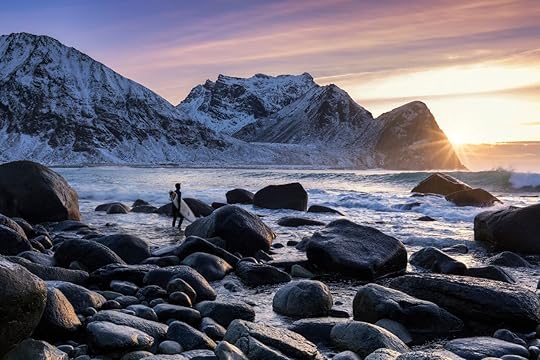
There’s nothing like surfing in cold water. Those surfers with the inclination to seek it out are often rewarded with empty lineups and a feeling that you can’t quite replicate in the comfort of warm, tropical waters. Imagine being in the sea with only one other surfer on a winter’s day, encased head to toe in thick neoprene. Now you’re sliding down the frigid face of a wave, the sound of it breaking muffled by your wetsuit hood, a sharp wind in your face as you trim across a chilly wall. There’s no one watching, but it doesn’t matter. The extra effort to overcome the elements makes the reward worth that much more.
It’s not for everyone, but the same motivation that has always driven surfers to leave their home breaks and look for new waves is what makes some surfers gravitate towards the raw beauty and isolation of cold places. If that sounds good to you, here are a few places to start your cold water surfing adventure.
1. Thurso, Scotland
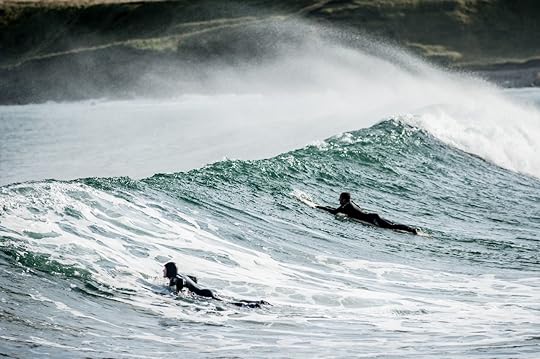
Photo: cornfield/Shutterstock
At the very north of Britain, Thurso is home to Scotland’s most well-known wave, Thurso East. It’s a right-hand barreling wave that breaks over a kelp-covered rock reef. A farm overlooks the break, but the farmer doesn’t seem to mind surfers using the edge of his yard as a car park, vans quickly filling up all the available space on a good day. Thurso Castle towers behind you and the peat-stained River Thurso brings dark and cold water into the lineup as you wait your turn.
The coastline around Thurso is littered with other options for all levels of surfer — or if the “crowd” at Thurso East gets too much. Solitude is not too hard to find, but when you meet another surfer, the lack of crowds means you’ll likely find them to be friendly. There’s also a short ferry from the nearby village of John o’ Groats to the Orkney Islands, where more waves are waiting to be found.
2. Lahinch, Ireland
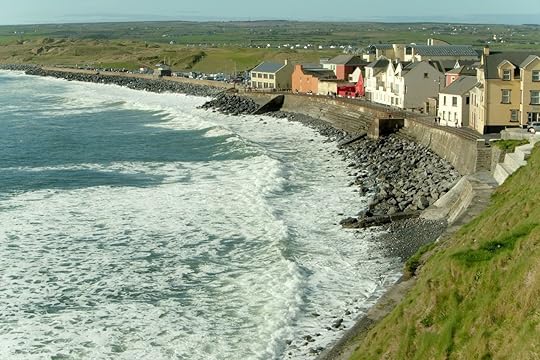
Photo: Joao Nunes de Almeida/Shutterstock
Lahinch is a small surf town in Ireland’s County Clare. Facing west into the Atlantic Ocean, it’s first in line to receive the full force of the winter swells. Ireland has a thriving surf scene with a dedicated crew of local surfers, and you’re likely to see a great display of surfing when the waves are good.
Lahinch itself is home to a more mellow beach break, as well as a series of left-hand reef breaks as you move south around the headland. Ten minutes away you’ll find the famous Cliffs of Moher. There, the land drops away to the Atlantic blue, and you can reflect on the waves you’ve surfed as you look out across the sea. For the brave, and skilled, there are some seriously heavy waves hidden nearby. To warm up after those long winter sessions, you won’t be disappointed by the local seafood chowder and Irish hospitality.
3. Lofoten Islands, Norway
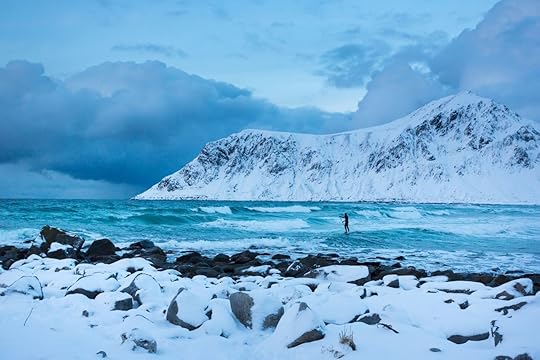
Photo: Konstantin Tronin/Shutterstock
The Lofoten Islands are located just off the rugged coast of northern Norway inside the Arctic Circle. It doesn’t get much colder! As wetsuit technology has improved, surfing in places like Lofoten has become possible. The surf scene is centered around the bay at Unstad, which is a mellow beach break bordered by snowy mountainous cliffs, with left- and right-hand point breaks on either side.
There’s something for everyone, including the local orcas. In winter, the days are short and finding the right combination of swell, wind, tide, and daylight becomes a major challenge, but when everything falls into place, it’s more than worth it. In summer it’s possible to surf all night thanks to the midnight sun — and it’s still cold. Hawaii, eat your heart out.
4. Reykjavík, Iceland
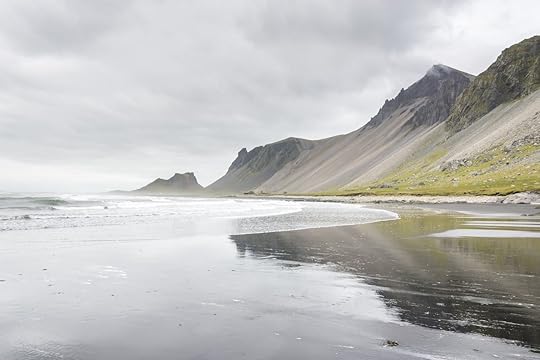
Photo: Sergey Didenko/Shutterstock
As the country’s name suggests, Iceland is the perfect example of cold-water surfing as a challenge. By all accounts, it doesn’t come easy there. The winters are harsh, the days are short, and the coastline is not well-documented in terms of waves. You’ll have to work hard to score the perfect conditions, but the potential is huge for swells from all directions lighting up world-class setups found in untouched landscapes.
Places like Iceland are the new frontier in the surfing world, and it’s definitely possible to pioneer quality waves — waves that have never been surfed before. If you’re lucky, you might even get to name one. First, though, you’ll need some very warm equipment, a four-wheel drive, and a generous dose of luck to find them. Reykjavík is the hub of Iceland’s population, and its surf scene and is the place from which to start your search.
5. The Great Lakes, North America
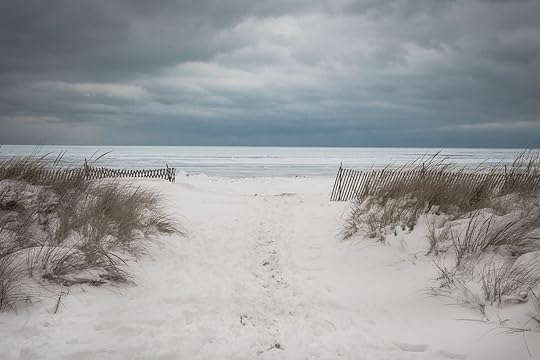
Photo: R. Wellen Photography/Shutterstock
For something a little different, the Great Lakes between the US and Canada have long stretches of coastline, and where there is coastline there are probably waves. The sheer size of the lakes means that decent waves are possible with the right wind. Surfers are scattered around the lakes, particularly in the major cities that border them like Chicago and Toronto.
The swell and wind are short-lived and difficult to predict, so expect to be religiously checking the forecast and driving around to find waves. There’s no guarantee that you will find them, but if you do, you’ll be surfing inland in literally freezing fresh water. And what a feeling that will be.
6. Tofino, Canada

Photo: Chris Howey/Shutterstock
Tofino in Canada’s surfing capital. Tofino, on Vancouver Island in southwest Canada, has developed from a small fishing and logging town to a surf tourism destination for the hardy devotees who don’t mind the cold. Tofino has several reliable and easy-to-access beach breaks, and its position facing out into the Pacific means exposure to swell is not a problem. However, roads are limited, and accessing the many other surf spots around the island can be difficult. A boat or seaplane could be useful, but local knowledge would be essential to make it worthwhile.
Vancouver Island undoubtedly has many quality waves that will remain undiscovered — or are at least kept secret by the few who have taken the time to explore. It’s up to you to find them for yourself, or you can just enjoy the waves at the more accessible beaches, still unspoiled and wild, backed by green forest and opening out to deep blue. 

More like this: Best waves for beginners to learn to surf around the world
The post The best places to go cold-water surfing this winter appeared first on Matador Network.
Matador Network's Blog
- Matador Network's profile
- 6 followers



